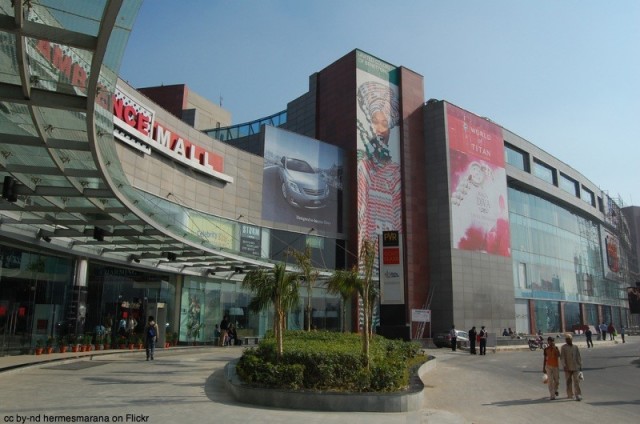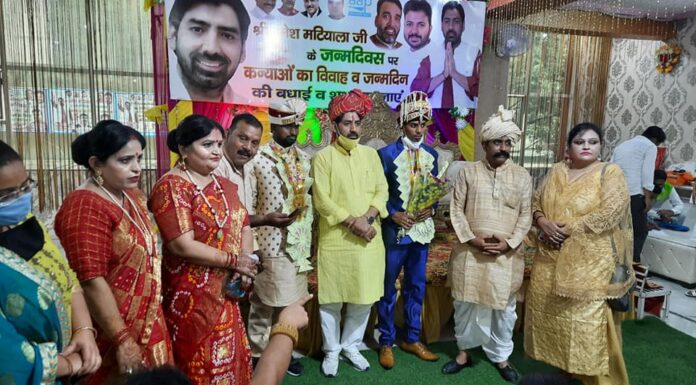The other day I visited a mall that I had been visiting for quite some time now but something pained me. As the slammed gaming area, with only a few machines in working condition and most of them in a worn out state caught my eyes.
“What happened” I asked the manager.
“We’re running into losses and most of us are looking for new jobs so no one seems interested in working Ma’am” came the brief and explanatory reply.
India is a mixed economy with a lot of business and trade potential. There was a time when there were only dedicated markets for particular commodities and products. Gradually with the coming of departmental stores and supermarkets the buying habits of consumer changed. This further encouraged the mall culture where everything-under-one-roof concept gained grounds.
The conventional traders and consumers found the mall culture a little different from the traditional market so initially they were reluctant but gradually the malls grew in the cities giving a new definition to the business arena. But, this too looks out of trend with the coming of online stores and e-commerce channels.

When there were departmental stores only a small shopping complex comprising of a single floor or two-three floors were found majorly run by a single owner usually the same family. Super markets were similar in nature too but, one good thing about these stores was that they generated employments for numerous individuals often at multiple cities mostly run by a group. Then came the mega marts and was a trend setter. Gradually the Malls came up in the comparatively bigger cities of India with multiple brands and products under one roof enabling the consumers to shop under one- roof in true terms.
The past couple of years have seen the boom in the mall culture but, recently it has been observed that the malls are no more doing so well in some of the smaller towns. Is that an alarm for the economic saturation?
Does that mean the trend of Malls is over?
Well, we need to understand the different scenarios to find the answers:
A. There is a huge shopping mall, in the outskirts of the city X which was constructed in 2009, it was running well till 2013 but, suddenly in 2015, most of the stores are shutting down as there are not many customers walk- ins and this is leading to a loss in businesses. Also the store owners are finding it difficult to rent out the shops and further sell them.
The SWAT analysis done by a group of management students who surveyed the place revealed the following findings :
- The mall was mostly being visited by the students and couples of late.
- The distance, commuting and parking problems in the initial years have lead to decreased foot fall gradually.
- The shops were mostly on rent which was too high as compared to those at other places.
- The rates of the goods were too high as compared to those available in open market.
- The game-zone and the food court have nothing new and they too are priced pretty high.
B. There is a mall in the heart of the city it has five floors only two floors have been occupied and that too partially. Gradually the footfall in the mall has decreased and it is on the verge of booking losses. The mall was surrounded by traditional markets and the shops have all been bought mostly with the investment perspective in mind.
The SWAT analysis done by a group of management students who surveyed the place revealed the following findings :
- The traditional markets have a good consumer base which refrain from paying high for the same products.
- The traffic and the crowd stops much people to visit the place.
- Here there aren’t many options to choose from.
- The demand for high rent by the shop owners, de-motivate people from hiring.
Here is a set of suggestions regarding the steps that can be taken to save the malls from going into losses:
- They can be developed into Business- Centers in the Public- Private Partnered Models.
- They can be leased out for specific time at affordable prices.
- They can be made into community friendly utility hubs rather than a competitive arena.
- They are developed in huge spaces with state of art facilities so they can be made into government kiosks and offices which are otherwise run in old monuments and buildings. And the old structures can be either renovated as other offices or community development and centers to accommodate the people in need.
- The malls can also be developed into places of tourist attractions so that they generate revenues.
- The municipal corporations can shift the overcrowded traditional markets to these malls and a secured zone especially for the traders who trade in precious gems and jewelry.
From the details gathered, more or less the highly priced place and products are responsible for the decline of people’s interest in the malls, but we know that the malls are highly priced because of many genuine reasons. Yet the concern too is alarming as the huge funds invested the infrastructure and amenities need a circulation so the best way out to resolve the crunch is the public- partner model as suggested. Also a restructuring of traditional market by shifting to business centers will be an added advantage not only to the Government but the society as a whole. Rather than disposing off the ideas outright a thought over this proposal might change the lives of many. The congested city roads and the slums on the outskirts may find new dimensions towards the growth and development if the partnered module works out hand in hand. Innovation , Improvement and development is the need of the hour also the increased population pressure on the urban parts will be managed better as taking over the malls by the public sectors will create new employment opportunities. This will not only revive the malls but the lives of many.
Image courtesy : Flickr































